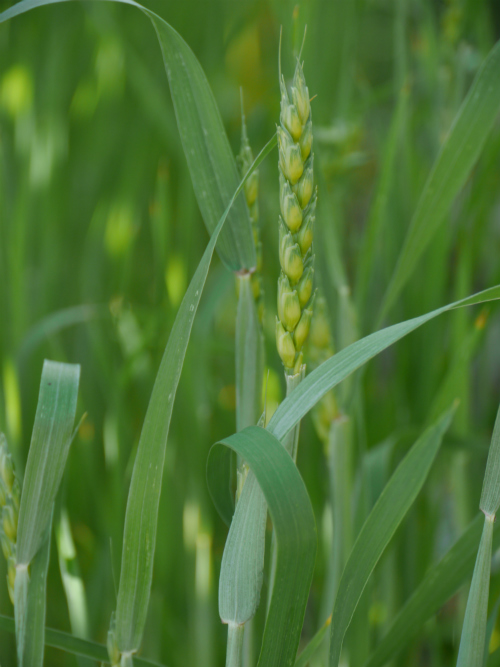The harvest season is quickly approaching and our grains are showing signs of maturity.
Buckwheat will be first to ripen, followed by wheat and then quinoa.
The rye planted will probably not produce seeds until the weather cools down or maybe not until the spring. If it never produces, we will be happy to know that it helped increase the quality of our soil, by acting as a green manure crop.
It has been a wonderful experience growing buckwheat, since many of us city dwellers have never seen it grow before. Many in the West know buckwheat as a nice addition to pancake batter, but few of us realize that it is famous in Eastern Europe under the name kasha and that it is grown and used in Asia for medicine and recipes such as soba noodles. Buckwheat planted in our grain bed, in July, grew very quickly and produced beautiful white flowers. We are now watching the brown, nut-looking seeds form behind the wilting flowers.
We planted quinoa in the KSSP, because it is a very striking looking plant and will help promote the International Year of Quinoa.
 The hard red wheat we planted is intended to be used as grass and seeds for our chickens and to educate visitors on where some of our most common food hails from. Now that it's grown and is recognizable, there's no denying the emotional satisfaction of seeing this iconic food source go from seed to mature plant.
The hard red wheat we planted is intended to be used as grass and seeds for our chickens and to educate visitors on where some of our most common food hails from. Now that it's grown and is recognizable, there's no denying the emotional satisfaction of seeing this iconic food source go from seed to mature plant.
Growing grains has been a great experiment so far. It has provided us with opportunities to share our insights on food origins, food traditions and food security across the planet, as well as our knowledge on building great soil.
To see and learn more, join us on October 27 (as part of the Around the Dome science festival) as we celebrate the harvest season and the completion of our first growing season at the Ken Spencer Science Park.
More grain resources:
Visit the Lawns to Loaves project blog to learn more about growing grains and to find out about this amazing project in collaboration with the Environmental Youth Alliance.
